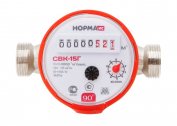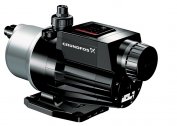In private and suburban homes, in the absence of a centralized water supply, a well often becomes the main source of water. The liquid coming from the depths is contaminated with various impurities, which can affect human health and the operation of household appliances. The question of how to purify water from a well from iron and lime can be solved in various ways, including using homemade filters.
Why are impurities dangerous?
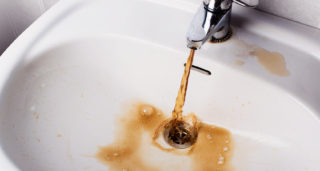 The existing myth of well water purity is far from reality. It contains mechanical impurities (sand, clay), organic pollution, lime or hardness salts, iron, manganese, chlorides and other salts, hydrogen sulfide and other hydrocarbon gases, bacteriological pollution. They not only change taste and cause unpleasant odors, but also can cause serious problems.
The existing myth of well water purity is far from reality. It contains mechanical impurities (sand, clay), organic pollution, lime or hardness salts, iron, manganese, chlorides and other salts, hydrogen sulfide and other hydrocarbon gases, bacteriological pollution. They not only change taste and cause unpleasant odors, but also can cause serious problems.
Poor water can affect human health. It violates the water-salt balance, it can provoke the formation of stones in the kidneys, urinary and gall bladder. Infectious infections are often found. There may be problems with the kidneys and liver. A serious effect of impurities on the performance of household appliances. Accelerated corrosion, the formation of scale and various sediments leads to malfunctions in the operation of water heaters, a stylish machine, dummies, and plumbing equipment.
Harm of lime and iron
One common problem is the presence of lime, i.e. salts of calcium and magnesium. Its maximum permissible content is 7 mEq / L. This admixture is not for nothing called the hardness salt. It significantly affects the stiffness and causes scale formation on the heating elements and in the kettle, and the salt deposit clogs the channels of the devices and the lumen of the pipes. Constant consumption of water with a high content of lime can cause urolithiasis and the formation of stones in the bile ducts. The optimal concentration of such salts is not more than 3 mEq / l.
Iron is the most common element of well water. Its maximum permissible content is estimated at 0.3 mEq / l. It is mainly available in divalent form. If the norm is exceeded, air oxygen oxidizes iron and water can acquire a brownish tint. The taste of the liquid is deteriorating. When washing dishes, rusty stains form. Deposits appear on household appliances that reduce their lifespan. This impurity causes the multiplication of iron bacteria. Water with a high iron content has a significant effect on the condition of the human skin and is able to affect the morphological blood composition. It contributes to the development of allergies.
Cleaning methods
The risk of these consequences necessitates the purification of well water from lime and iron. There are several ways to do this, which are based on mechanical, physical, and chemical principles of action.
Upholding
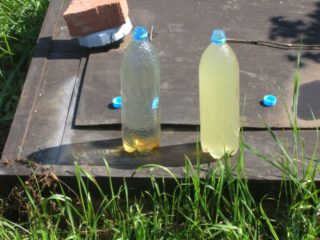 The easiest way to clean is settling (gravity method). In the water supply system of the house, a capacity is installed, the volume of which exceeds the daily need of residents. It is usually installed in the attic, so that water is supplied to the water points by gravity. As the fluid outflows, the volume is constantly replenished. As a result, impurities, having a higher specific gravity, settle on the bottom of the tank.
The easiest way to clean is settling (gravity method). In the water supply system of the house, a capacity is installed, the volume of which exceeds the daily need of residents. It is usually installed in the attic, so that water is supplied to the water points by gravity. As the fluid outflows, the volume is constantly replenished. As a result, impurities, having a higher specific gravity, settle on the bottom of the tank.
The advantages of the method:
- simplicity;
- low costs;
- the ability to use when disconnecting electricity;
- simultaneous removal of hydrogen sulfide and mechanical impurities.
Minuses:
- the need for constant monitoring of the water level in the tank;
- insufficient degree of purification;
- the need for frequent cleaning of the tank from precipitation.
Aeration
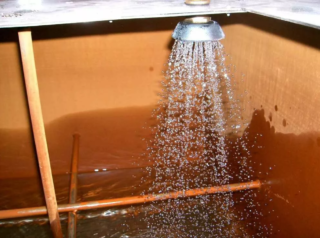 Aeration is recognized as a rather effective way to remove iron and metallic impurities. It combines the principle of saturation of a liquid with air and sedimentation. The system installs a capacity similar to the above option. With the help of a compressor, air is supplied into it under pressure, providing intensive air exchange. Oxygen actively oxidizes iron and other metals, and the resulting oxides precipitate.
Aeration is recognized as a rather effective way to remove iron and metallic impurities. It combines the principle of saturation of a liquid with air and sedimentation. The system installs a capacity similar to the above option. With the help of a compressor, air is supplied into it under pressure, providing intensive air exchange. Oxygen actively oxidizes iron and other metals, and the resulting oxides precipitate.
The advantages of the method:
- high environmental friendliness;
- oxygenation, which improves palatability;
- the ability to clean significant volumes;
- low expenses;
- the ability to automate the process.
Minuses:
- can be used when the iron content is not more than 10 mg / l;
- the need for frequent mechanical cleaning of the container.
Ion exchange technology
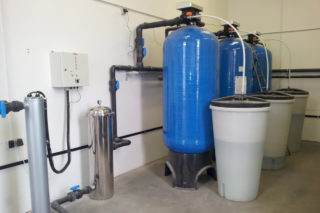 Water purification using ion exchange is provided by filtering devices in which elements are made of resinous substances. In this case, metal ions are replaced by sodium ions. Iron goes into a 3-valent form and precipitates. Similarly, there is a disposal of calcium ions in lime. Released ions are deposited on the filter.
Water purification using ion exchange is provided by filtering devices in which elements are made of resinous substances. In this case, metal ions are replaced by sodium ions. Iron goes into a 3-valent form and precipitates. Similarly, there is a disposal of calcium ions in lime. Released ions are deposited on the filter.
Benefits:
- high efficiency;
- water softening;
- the possibility of application with an iron content of up to 30 mg / l;
- universality of the method.
Minus - the need for special filters, the need for periodic replacement, the ability to multiply bacteria in the sediment on the filter.
Catalytic oxidation
Efficient purification is achieved by catalytic oxidation. The method combines the principle of aeration and filtration. Air is supplied to the water stream to facilitate the aeration process. Then it passes through a special filter containing catalysts of the Birm type, on a dolomite or glauconite basis, zeolite. The filter is selected taking into account the chemical composition of the water. The most popular: Sorbent MSK, Sorbent MS, MFO-47, Superferoks, MZhF.
Benefits:
- high cleaning efficiency;
- universality of the technique;
- ability to cope with significant pollution.
Minuses:
- increased costs;
- the need for periodic regeneration and replacement of filters.
Reverse osmosis
 The most effective cleaning method is reverse osmosis. Water purification is provided at the molecular level. The installation has several filters (including fine cleaning) and a semipermeable membrane. They provide almost complete disposal of water from impurities.
The most effective cleaning method is reverse osmosis. Water purification is provided at the molecular level. The installation has several filters (including fine cleaning) and a semipermeable membrane. They provide almost complete disposal of water from impurities.
Advantage: complete purification of water from all types of salts. Cons: increased cost, obtaining "dead water", which is preferably artificially mineralized before use.
How to make a filter for cleaning
At home, you can make a simple but effective filter for cleaning water with your own hands. It can be made from a 1.5 liter plastic bottle. As the sorbent, charcoal can be used. It must be crushed (particles no more than 4-5 mm), boiled for 4-6 minutes, and after cooling, pour into a bottle (1/3 of the volume). A hole is made in the cork for supplying water. A mechanical filter from a flap of fabric is placed in the neck. A hole is made at the bottom for water to exit. Set the grid here. Such a simple filter makes it possible to obtain drinking water of a sufficiently high quality.
Water from the well is contaminated with various impurities. In order to protect yourself and household appliances, it is necessary to clean the liquid before use. It is best to use off-the-shelf installations that provide fine, efficient cleaning. You can purify water with homemade systems or filters. It is important to remember that purification of well water is necessary.
